You must have heard about the benefits of selecting the best vinyl cutting machine for craft cutting – it saves time and money, and help you create and reproduce crafts and designs more accurately while transforming your craft and design workflow.
- You have probably purchased your vinyl cutter, but you don’t know what craft vinyl really is or how you can store it.
- You’re overwhelmed by the many different varieties and types of vinyl available and their uses. Find out below!
- You are not sure which type of vinyl to use on shirts, on wood, on a mug, for glass etching, and so on. How do you select the right vinyl for the job?
Read on! The answers you seek are just a few lines away.

What is Craft Vinyl?
The word “vinyl” conjures up different meanings for different sets of people.
In the 1900s, millions of phonograph records were produced with vinyl; this material was also used to make seat covers which replaced the leather covers on our sofas and car seats.
Before we knew it, vinyl had taken the place of leather in handbags and shoes and is being used to make household items, sheet flooring, faux leather clothing, and many more due to its flexibility and durability.
Let me introduce “Craft Vinyl” yet another form of vinyl to you. This is a thin material with a very smooth and fine surface and often a peel-off paper backing or plastic sheet backing (depending on the type).
Craft vinyl is self-adhesive, comes in rolls or sheets, and is available in different thicknesses and color options.


Craft vinyl is an important aspect of every craft cutting task; it comes in different varieties and is used by both craft businesses and die-hard home crafters for different applications and on different surfaces.
For instance, craft vinyl for signs makes sign-making easy and quick and is used for creating custom designs, letterings, logos, or labels.
Vinyl for fabrics is used for making designs on t-shirts and other clothing items while vinyl for walls is intended for making designs or lettering on a wall.
Types of Craft Vinyl
There are two main categories of Craft Vinyl – Heat Transfer Vinyl (also known as HTV, t-shirt vinyl or iron-on vinyl) and Adhesive Vinyl (also known as sticker vinyl).
However, there is a myriad of colors, types, styles, and special effects within each of these two main categories of craft vinyl, which I’m going to talk more about soon.
Adhesive Vinyl
Adhesive vinyl is a flexible paper-thin material with a self-adhesive surface that is sensitive to pressure. You can cut this material in any shape or design that you like and apply it on any smooth and hard surfaces.
Adhesive vinyl is available in different thicknesses. Irrespective of that, it always comes with a paper carrier sheet (paper backing) and will be tacky to the touch when you peel off its backing.
This material is easy to use, just run the vinyl through your vinyl cutting machine with the paper backing facing down and the vinyl facing up to cut out your designs.
Pull away (weed out) the excess vinyl until you’re only left with your design, apply transfer tape to it.
When you’re ready to apply your design (the decal), peel off the paper carrier sheet, apply the design, then remove the transfer tape, and you are good to go!
Heat Transfer Vinyl
Heat Transfer Vinyl is similar to adhesive vinyl, but its surface is not tacky or sticky to the touch. It has no paper backing but comes with a clear plastic sheet backing that covers the top of the material.
Its adhesive is activated by heat, so it is intended for use on fabrics or any other surface that can withstand the heat and you can only apply it with an iron or a heat press.
Heat transfer vinyl is also easy to use just like its adhesive brothers and does not require additional transfer tape.
You only have to run it through your vinyl cutter with its duller back facing up and its clear shiny surface facing down to cut out your designs.
To apply your decal, just weed out the excess vinyl, flip it over, apply it with an iron or a heat press, remove the backing, and voila!
Now that you know what the two main types of craft vinyl are and have an idea of its applications.
Let me show you the other types of vinyl within the two main categories as well as their uses.
Different Types of Adhesive Vinyl
Oracal 631: This is a popular removable indoor vinyl with a matte finish. It is available in 96 colors and is intended for use on walls or indoor items (like ornaments, picture frames, shadow boxes, etc.) that will not be washed.



Oracal 641: This is a matte vinyl with permanent water-based adhesive (with a 3-5-year rating). It is available in 18 colors, and you can use it for outdoor applications and on hand-washed items like cups, car windows, mugs, etc.
Oracal 651: This is a popular permanent outdoor vinyl with a 5-8-year rating. You can also use it on indoor items like cutting boards, cups, mugs, and other items that you can hand wash. It is available in 64 colors (i.e., 3 matte finishes plus 61 gloss colors).
Oracal 751: This is a long-lasting outdoor permanent vinyl with an 8-10-year rating.
It is thinner and easier to apply on surfaces with multi-dimensional curves; it comes in 28 different colors and is more expensive than the rest.
Sometimes, it is more difficult to cut, weed, and apply without breaking or stretching it. It is good for items that you can wash or those that you want their decals to last a long time.
Oracal 951: This is an extra long-lasting permanent vinyl with a 10-12-year rating. It is available in 105 colors and is also more expensive.
It is also good for surfaces with multi-dimensional curves, and items that you can wash or those that you want their decals to last long.
Oracal 5600: This is a permanent outdoor reflective vinyl with up to 7 years ratings. It comes with a clear, permanent solvent-based adhesive that is removable with heat.
It is available in 10 different colors and is specially designed to make reflective graphics or letterings on vehicles.
Oracal 6510: Available in 6 colors, Oracal 6510 series is the neon (fluorescent) color of Oracal 651 and can be used as 651. It has an outdoor lifespan of 1-2 years.
Oracal 8300: it has up to 5-year lifespan. It is available in 30 bright transparent colors that you can superimpose to get fine shades of color; this means, it allows for endless creative possibilities.
It is ideal for making a stained-glass effect, back-lit glass surface decoration, and high-quality illuminated signs.
Oracal 8510: This is a permanent, etched glass vinyl; it is available in gold and silver color as well as in both coarse and fine textures. It is perfect for use on cups, mugs, windows, and items you can gently hand wash.
Oracal 8710: This is a translucent grey vinyl for glass or mirror design elements. It gives the appearance of translucent etched glass. It is ideal for glass doors, room dividers, and shop windows.



Oracal 8810: Has the same applications as 8710. However, it gives glittering effects, comes in 5 colors, and lasts longer (up to 7 years)
Oralux 9300: This is a permanent vinyl, it comes in a one-color combination (green and white) and glows in the dark (produces green color when glowing and white when it’s not).
Oramask: This is a stencil vinyl suitable for use with latex paints.
OraGuard: This is a permanent vinyl that is designed for use on printed graphics. It is available in gloss and matte finish. You can use the gloss OraGuard over the matte vinyl and vice versa.
Using this vinyl over another adhesive vinyl can increase the vinyl’s UV protection with an addition of 2 years.
StyleTech Opal: This is a permanent glossy outdoor vinyl with a lifespan of 1-2 years. It is available in 8 colors and is known for its exceptional display of flashing multi-color.
StyleTech Metalized: Permanent vinyl with up to 2 years of durability.
StyleTech FX Glitter: Another permanent vinyl with outdoor durability of 5-8 years. It is available in 12 colors with a high concentration of metallic flakes which makes them glitter.
Siser Permanent EasyPSV: Permanent vinyl for indoor and outdoor signs and decals.
You can use it on wood, glass, mirrors, ceramics, metals, and plastic. However, it can damage drywall and other painted surfaces. Do not use it near a microwave, heat source, flame, or dishwasher.
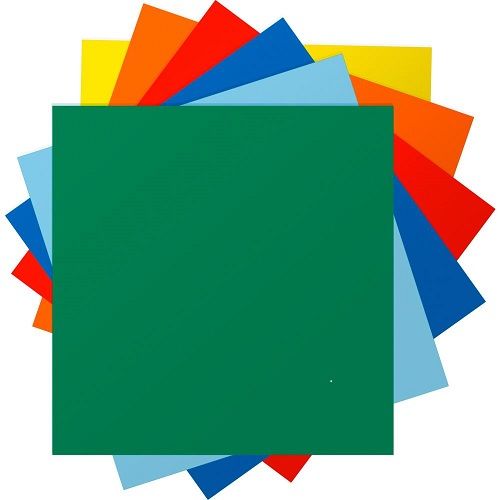

Siser Removable EasyPSV: Removable matte vinyl for craft use on painted drywall, wood, glass, mirror, ceramics, metals and plastic. Do not use it near a microwave, heat source, flame or dishwasher.
Other varieties of adhesive vinyl include:
- StyleTech Luster
- StyleTech Polished Metal
- StyleTech Transparent Glitter
- StyleTech 4000
- StyleTech Ultra (Glitter)
Different Types of Heat Transfer Vinyl
EasyWeed: Available in 97 colors, this HTV is an easy to use, iron friendly product. It can be layered and used on 100% polyester, 100% cotton, and cotton/polyester blends.
EasyWeed Stretch: This HTV is thinner and stretchy, making it ideal for performance wear, workout wear, sports jerseys and tight-fitting clothing that must be stretched to take off or put on.
It is available in 25 colors and used on Spandex, 100% polyester, 100% cotton, and cotton/polyester blends.
EasyWeed Extra: This product has all the benefits of EasyWeed with the advantage of sticking to nylon. It comes in 11 colors with a semi-gloss finish, you can apply it in layers and can be used on nylon, 100% polyester, 100% cotton, and cotton/polyester blends.
EasyWeed Glow: This HTV charges when exposed to sunlight and glows in the dark. It also adheres to 100% polyester, 100% cotton, and cotton/polyester blends but should not be used on stretchy items as it may crack.
Siser Glitter: It is thicker and has a real glitter feel. Available in 51 colors adhere to 100% polyester, 100% cotton, and cotton/polyester blends but should not be used on stretchy items as it may crack and peel.
Holographic: It contains reflective chips that change color and sparkle. For use on polyester and cotton but not for stretchy items.
StripFlock: This HTV is a great substitute for embroidery; it is fuzzy and thicker and is ideal for making designs with a raised, textured velvet, or suede-like feel. It looks great on bags, caps, hats, backpacks, etc., and can be used on cotton, polyester, and leather.
Easy Reflective: This unique reflective HTV can be used on all kinds of fabrics and accessories that require higher visibility.
EasyWeed Sub Block: Durable HTV, great for team jerseys, and sporting gears. It also works on cotton and polyester.



Other varieties of Heat Transfer Vinyl include:
- Metal
- EasyWeed Electric
- Siser Brick 600
- VideoFlex Glitter
- EasyPatterns
Phew, that’s too many options, right? So how do you select the right vinyl for your craft project? Find out below!
How to Select the Right Vinyl for the Job
Before you select a vinyl for your craft, you should ask yourself the following questions and allow your answers to direct you to the right product for your craft project:
- What type of surface do you want to work with?
- For how long do you want your sign or decals to remain on that surface?
- Will the surface or your final product be exposed to the element?
- Do you want something that can withstand lots of handling?
Hopefully, after going through the different types and varieties of craft vinyl, you can determine what kind of craft vinyl is suitable for whatever project you’re thinking of.
The basic selection rule is: if your surface is smooth and hard (like boxes, mirrors, picture frames, bottles, mugs, walls, etc.), then you should go for adhesive vinyl.
If you want to decorate a soft surface (like bags, totes, books, shoes, fabrics, etc.) that can take the heat, then go for the heat transfer vinyl.



Also, if you want your decal to last long or you want to decorate outdoor surfaces (exposed to the element), or a surface that you will want to wash, then go for permanent vinyl.
Otherwise, a temporary or removable vinyl should be able to do the job.
Generally, all Heat Transfer Vinyl is washable and should work on all materials and fabrics that can withstand the heat of your heat press or iron.
So, if you want to choose an iron-on vinyl, you should consider the elasticity of the material, and the look you want since some HTV will work better for some designs or fabrics than others.
For instance, stiff vinyl, like metallic and holographic vinyl works better with smaller designs instead of large vinyl stretches while stretch vinyl works best with stretchy fabrics and sportswear.
Once you’ve decided whether you need a removable or permanent vinyl or the vinyl with the right adhesive for your surface, you can proceed to select the style or color that you like.
How to Store Vinyl
While it’s completely normal to hoard vinyl or collect every color that appeals to you, it is also important to know how or where to store your vinyl.
Without proper storage for your craft vinyl and other craft gear, you might end up damaging them or leaving your craft room cluttered even before you know it.
Luckily, there are several places (like storage bins, storage cabinets, craft bags, standing wine or shoe racks, hanging crates, etc.) where you can store your vinyl or decals to prevent them from getting crinkled or damaged.
You can also use page protectors and a binder to temporarily store your designs or decal vinyl that is waiting to be applied.
Where to Buy Vinyl
There are a lot of companies from which you can buy your vinyl – while some offer high-quality vinyl, others offer low-quality vinyl.
One of the best places to buy vinyl is Amazon. Here, you’ll find different types and assortment of vinyl from different companies at a reasonable price.
However, there are other places I can also recommend.
If you own a Circut or Silhouette vinyl cutting machine, you can get quality vinyl from MyVinylDirect or CraftHTV for your machine.
You’ll also get high-quality vinyl of different types, styles, and colors for different vinyl cutting machines at an affordable price (even with a discount) from Expression Vinyl, 651Vinyl, and CraftVinyl.
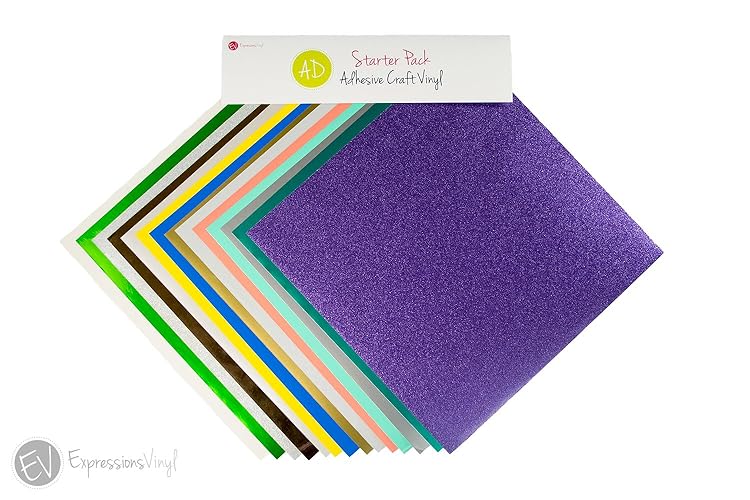


Frequently Asked Questions
As a Beginner, What Adhesive Vinyl Should I Start With?
While you can follow the guide above to select the type of adhesive vinyl that suits your craft project, it is advisable for you to start with a removable vinyl, especially for your first project.
That is because it is easier to work with. Its adhesive is not as strong as the one you’ll find in permanent vinyl, so you can easily remove the vinyl if you make a mistake.
When you’re able to work perfectly with vinyl, you can now progress to using the permanent ones.
Can HTV Adhere to Wood?
Yes! HTV is recommended for soft materials (like bags, fabrics, leather, etc.) that can take the heat, wood is not a soft material, but it can withstand the heat and adhere properly to the vinyl.
Can I Layer Glitter Heat Transfer Vinyl?
Yes, you can, but most glitter vinyl manufacturers do not recommend it.
Matte or gloss adhesive vinyl – which should I use?
This boils down to the craft you intend to create. Adhesive vinyl with a matte finish is perfect for indoor applications on plates, cups, glass, walls, etc. while gloss adhesive vinyl is good for outdoor applications and can also be used for indoor items.
Final words
Now that you understand the types and varieties of vinyl, you can now go ahead to select the right one to use for your craft project. If you need more information or have any questions, kindly use the comment section below.

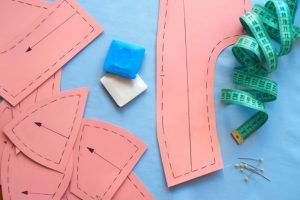
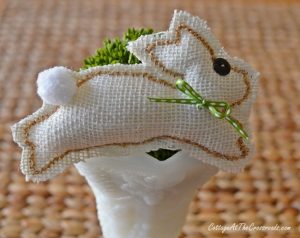

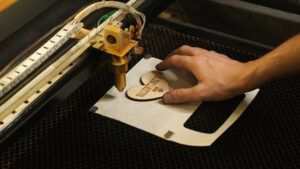

This is the best explanation of vinyl I’ve found anywhere. Thank you so much for taking the time to write this. I’ve been wanting to play with vinyl but I felt lost on where to start before I read this. Thank you so much!